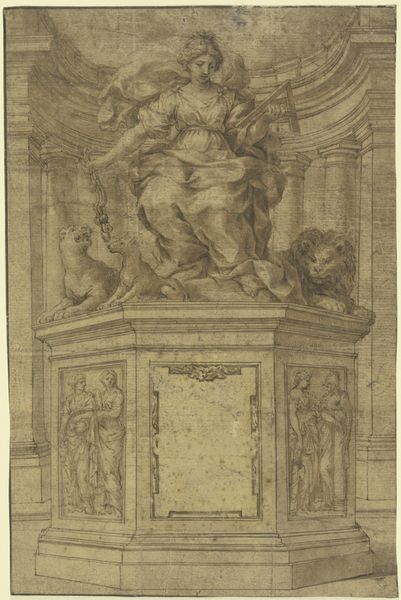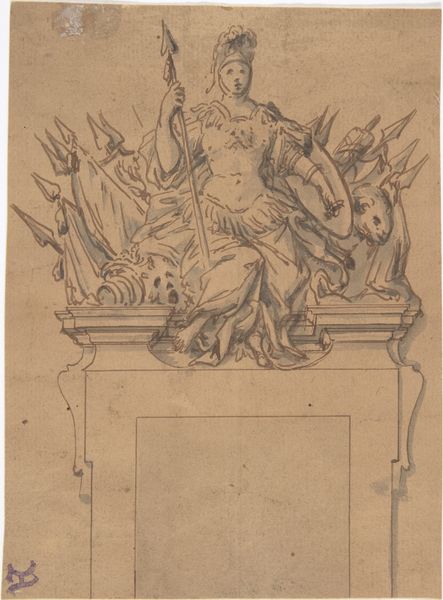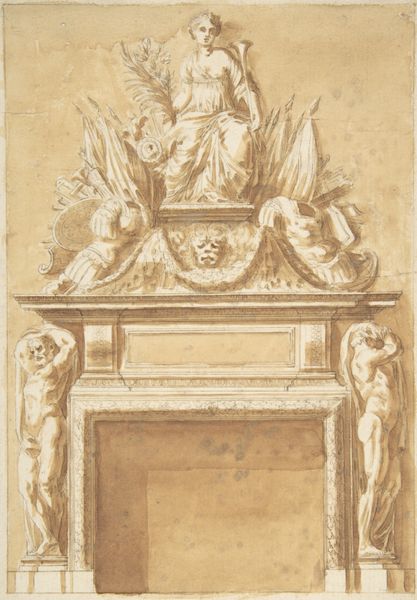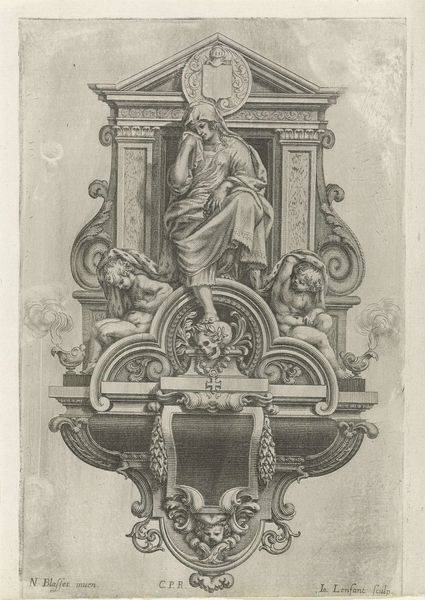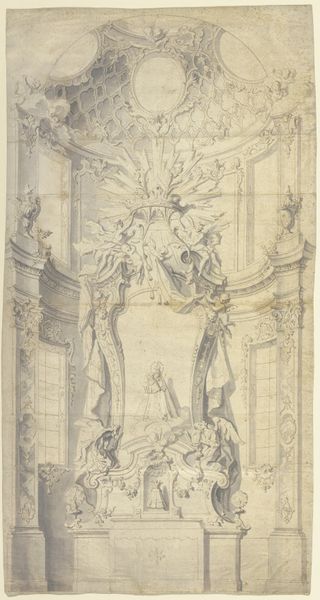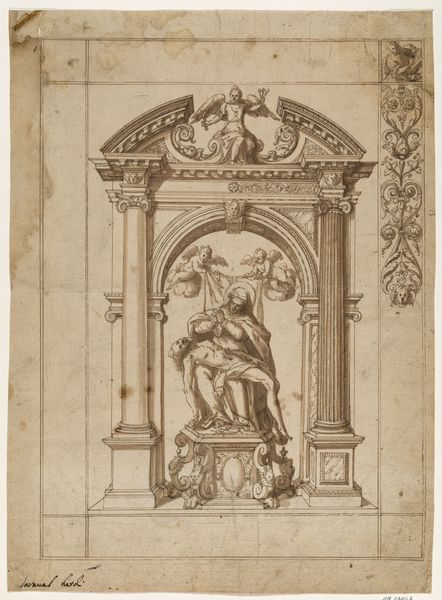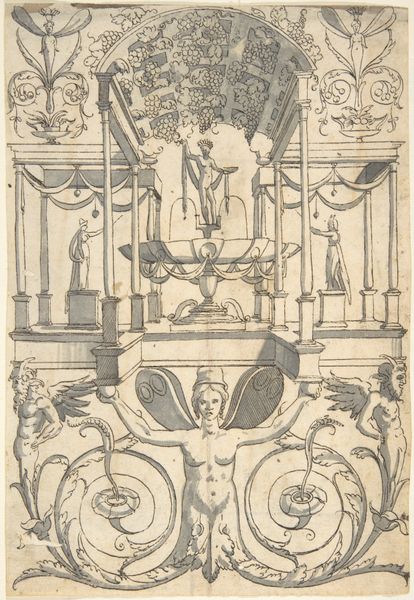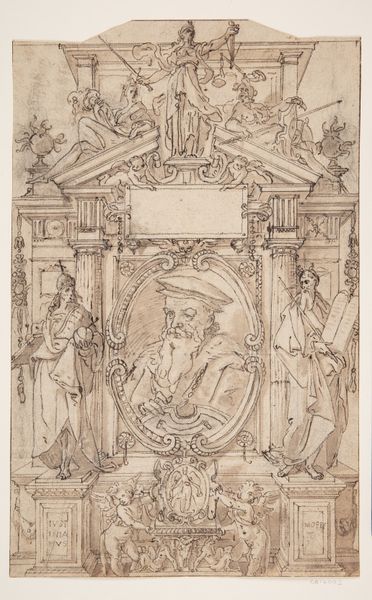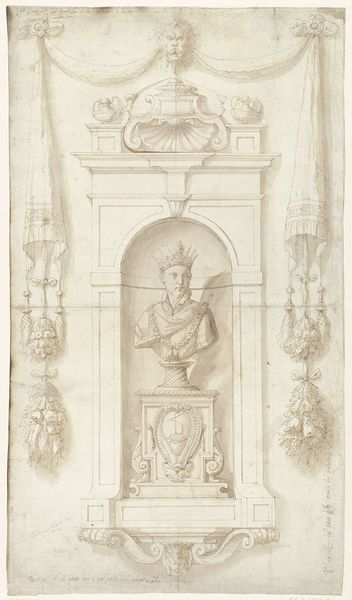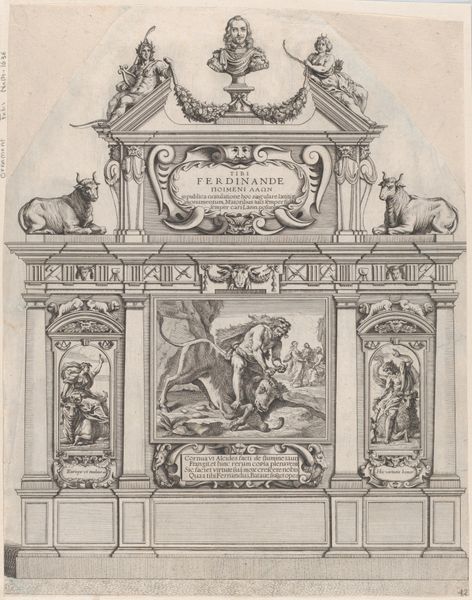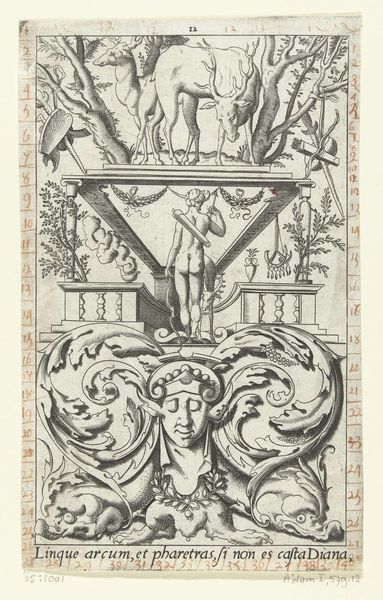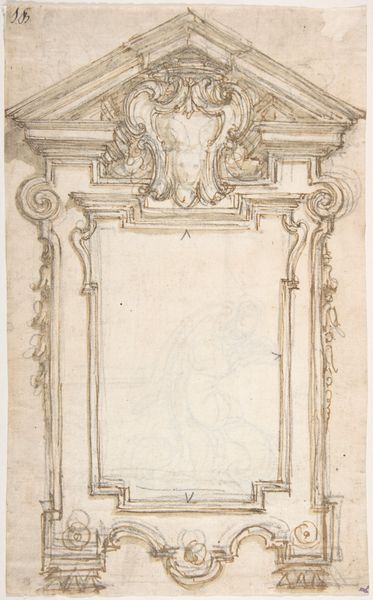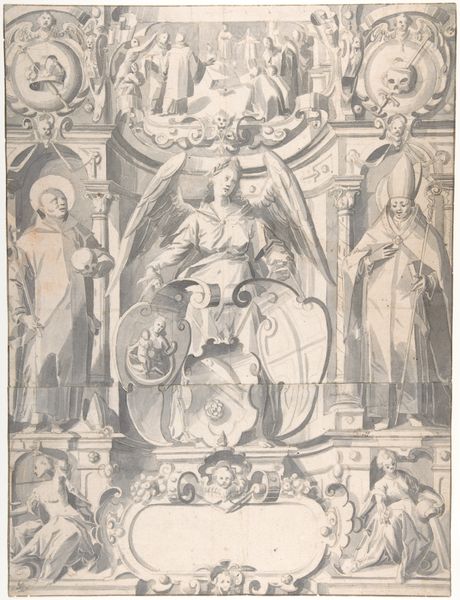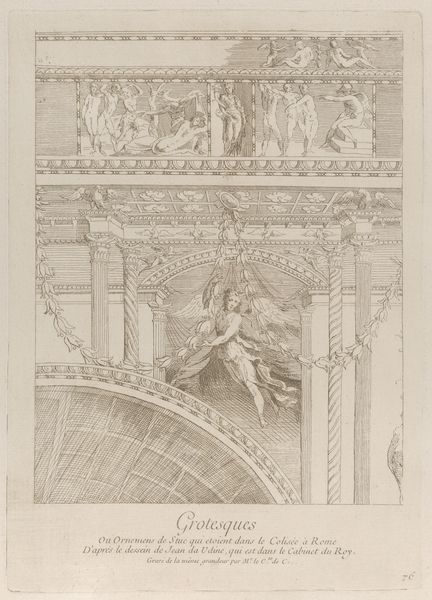
drawing, print, paper, ink, graphite, pen
#
portrait
#
drawing
# print
#
pencil sketch
#
figuration
#
paper
#
11_renaissance
#
ink
#
water
#
graphite
#
pen
#
history-painting
#
academic-art
#
italian-renaissance
Dimensions: 309 × 216 mm
Copyright: Public Domain
Curator: Welcome. We're looking at a print housed here at The Art Institute of Chicago entitled "Tomb of Pope Gregory XIV in Saint Peter's." It's rendered in ink, graphite, and pen on paper. What's your immediate impression? Editor: Striking formality. It feels very staged, architecturally sound, like a theater set perhaps more than a memorial, all rendered in very precise line work. Curator: Precisely. Let’s consider the print's function. It serves as a record, a reproducible image circulated to document and disseminate the design and aesthetic choices of the original tomb. It would allow for potential clients and other artisans to study this model. Editor: And the structure itself seems heavily symbolic, doesn’t it? Pope Gregory sits within a sort of scallop shell, elevated, holding what appears to be a book of knowledge, while cherubs and allegorical figures surround him. It all points towards a very curated message of power and authority. Curator: Consider too the artistic labor and skill involved in replicating such a design, even in print form. This wasn't just about accurate reproduction; it was about translating architectural grandeur into a medium that could be disseminated and consumed more readily. The material choice of ink and graphite afforded the capacity for precise detailing as well. Editor: Yes, the control of line and value, even in a reproductive print, conveys the artist’s technical prowess. Note how the engraver suggests depth and shadow using only thin layers of hatching. There is a textural illusion throughout. It elevates it beyond mere utility. Curator: Absolutely. The existence of a work like this reveals the dynamics between artistic craftsmanship, papal authority, and the dissemination of aesthetic ideas in the Renaissance. It shows the power of image making. Editor: It’s remarkable to think how much information is packed into such a contained image, ready to travel. Curator: Indeed. Thank you for sharing your observations, focusing as you did on composition. Editor: Thank you. It is an honor to decode it from a materialist lens.
Comments
No comments
Be the first to comment and join the conversation on the ultimate creative platform.
